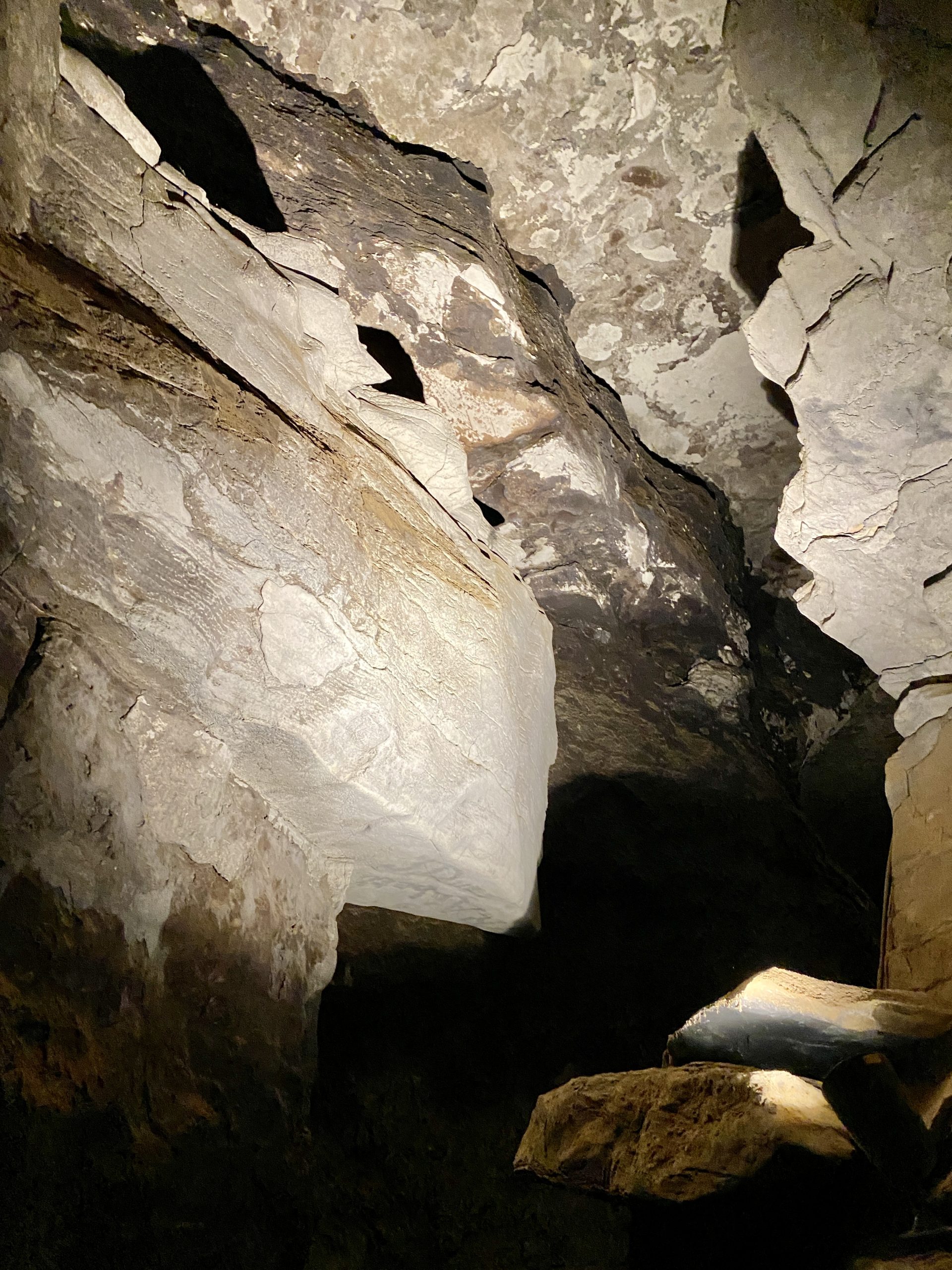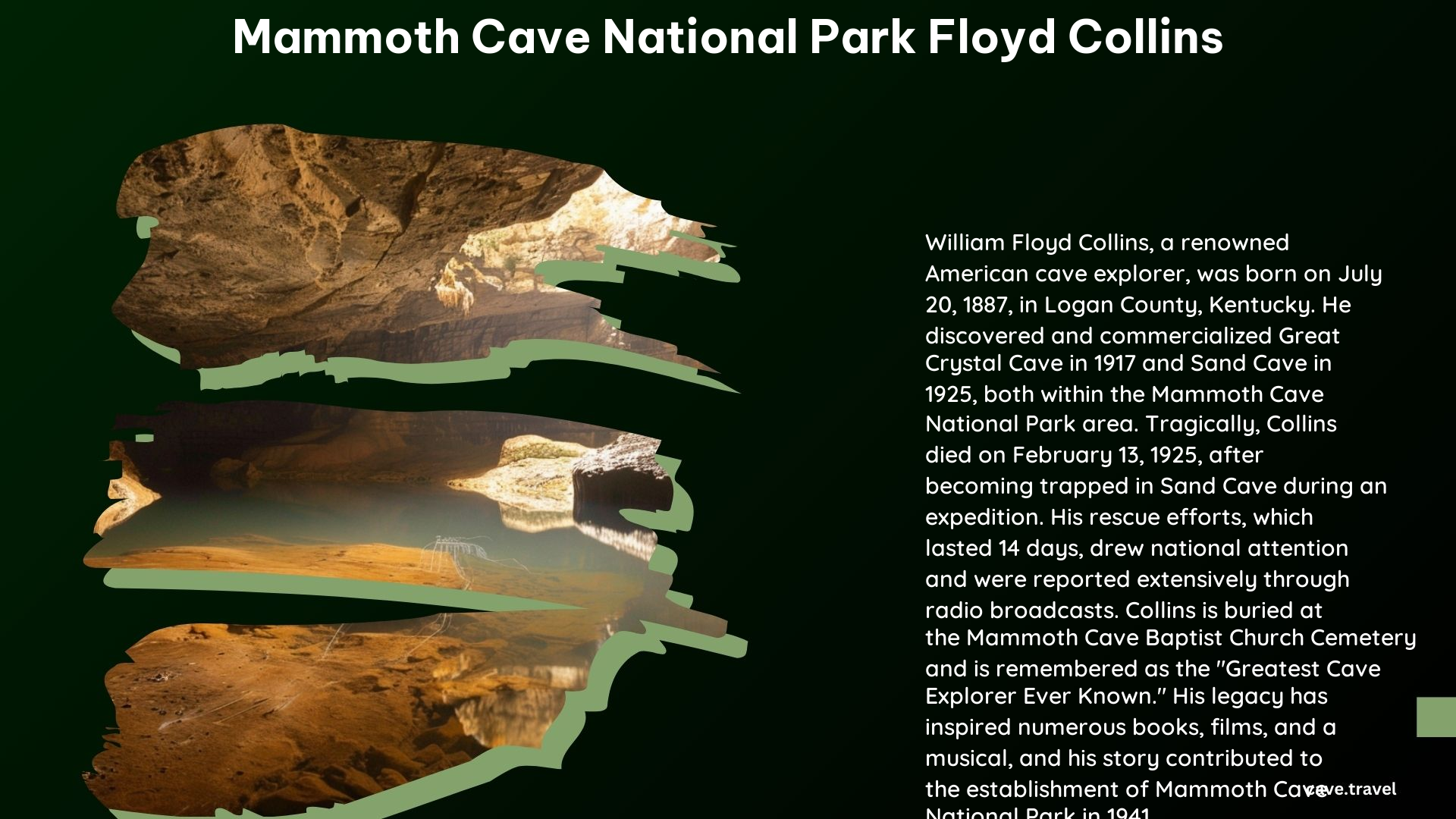Mammoth Cave National Park is deeply connected to the life and legacy of Floyd Collins, a renowned cave explorer who tragically lost his life in 1925. This blog post will explore the significance of Floyd Collins in the history and development of Mammoth Cave National Park.
Early Life and Exploration

Floyd Collins was born on July 20, 1887, in Logan County, Kentucky. From a young age, he developed a passion for cave exploration, discovering his first cave, Donkey’s Cave, on the Collins family farm in 1910. In 1917, Collins made another significant discovery – the Great Crystal Cave, which he commercialized, though its remote location made it difficult to attract visitors.
The Tragedy at Sand Cave

In 1925, Collins entered into an agreement with a neighbor to explore Sand Cave, which was closer to the main road. On January 30, 1925, while attempting to enlarge a passage, Collins became trapped in the cave. The rescue efforts that followed lasted 17 days and were highly publicized, bringing national attention to the Mammoth Cave area.
The Legacy and Impact on Mammoth Cave National Park
The national attention generated by Collins’ death contributed to the establishment of Mammoth Cave National Park in 1941, which aimed to protect the extensive cave system in the area. The Collins family’s homestead, where Floyd lived and operated his show cave business, is now part of the national park and played a significant role in early cave exploration and tourism in the region.
Burial and Memorial
Floyd Collins is buried at the Mammoth Cave Baptist Church Cemetery, where visitors can pay their respects to one of the most famous cave explorers in history. His tragic death and the subsequent rescue efforts have also inspired numerous books, films, and musicals, cementing his place in American cultural history.
Significance and Lasting Impact
Collins’ death emphasized the importance of safety measures in cave exploration, leading to improved practices and regulations in the field. The national attention generated by his story also contributed to the growth of tourism in the area, which has had a lasting impact on the local economy.
Key Statistics and Facts
| Statistic | Value |
|---|---|
| Date of Death | January 30, 1925 |
| Age at Death | 37 years old |
| Location of Death | Sand Cave, Kentucky |
| Cause of Death | Exposure, exhaustion, and hypothermia |
| Rescue Efforts Duration | 17 days |
| Year of Establishment of Mammoth Cave National Park | 1941 |
References
- Mammoth Cave Baptist Church, Mammoth Cave, KY – Floyd Collins / Place of burial: Mammoth Cave Baptist Church, Mammoth Cave, KY.
- Floyd Collins (U.S. National Park Service) – Significance: Renowned cave explorer whose death brought national attention to the Mammoth Cave Area; Place of Birth: Logan County, Kentucky.
- Floyd Collins – William Floyd Collins was an American cave explorer, principally in a region of Kentucky that houses hundreds of miles of interconnected caves, today a part of Mammoth Cave National Park, the longest known cave system in the world.
- Floyd Collins Homestead (U.S. National Park Service) – Location: The Floyd Collins Homestead is located off of the Flint Ridge Road, in the Eastern Portion of Mammoth Cave National Park.
- The Kentucky National Guard and the William Floyd Collins Tragedy … – Mammoth Cave became part of the National Park Service. In 1961, the National Park Service purchased Crystal Cave and restricted access to Floyd’s coffin.
- Tragedy at Sand Cave (U.S. National Park Service) – At 1:30pm they break through to a Sand Cave passage. Floyd Collins is found dead. They say the cause of death is due to exposure, exhaustion and..
